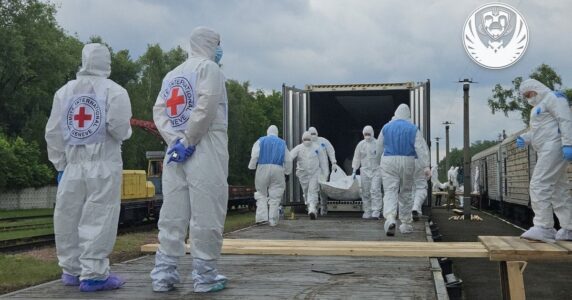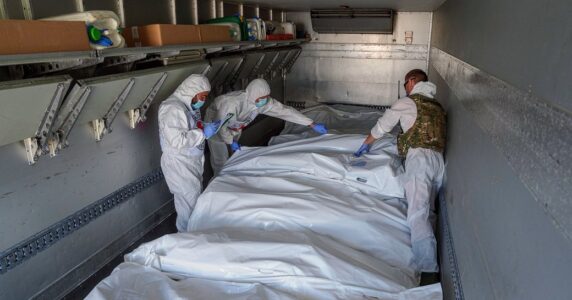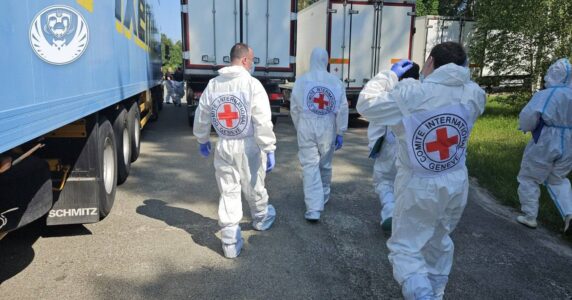Navigation and useful materials
For centuries, the Kremlin’s politics focused on the Russification of all the nations living on Russia’s territories, quenching national self-awareness, and pushing forth the “Russian world” ideology. This is the politics one would call imperialism.
And now, after it started the full-scale war against Ukraine, Russia is mobilizing the indigenous population first. It uses them as cannon fodder, destroying these ethnicities to fulfill its rapacious goals.
In this article, we’re going to discuss Russia’s politics of ethnocide. We’ll see how Russia is destroying entire ethnicities in the war, killing Ukrainians at their expense, all the while trying to save the “titular nation” of the empire — that is, ethnic Russians.
How Russia’s politics of ethnocide works
The total number of nations living on Russia’s territory approaches 200, including ethnic communities and indigenous peoples. Reaching 80%, Russia’s largest ethnic group is Russians. They are followed by Tatars (around 4%), Ukrainians (around 1–2%), Bashkirs, Chuvash people, and Chechens (each group constituting around 1%). The rest are even smaller ethnic groups.
The Volga region (the republics of Mordovia, Chuvashia, Mari-El, Tatarstan, Udmurtia, and Bashkortostan) and Karelia, the Caucasus, and the Urals are Russian territories inhabited by indigenous peoples for ages. But these peoples have limited political rights and no opportunity to develop their own cultures and languages.
Indigenous peoples in Russia are considered “non-titular” ethnic groups and are therefore viewed as second-rate and unimportant.
Currently, as many as nine indigenous peoples are already on the verge of extinction: they have no more than a thousand people left. This includes Keriks, Enets, Oroks, Negidals, and Chelkans.
At the same time, the historical territory of small indigenous peoples constitutes approximately three-quarters of Russia’s entire territory. These lands are also where many of Russia’s economy-defining resources come from. Despite that, the Kremlin despises the histories and cultures of the peoples living there.
The so-called politics of ethnocide, that is, the politics aimed at the extermination of identities and cultures of specific nations and ethnic groups, has always been an essential part of Moscow’s strategy.
In fact, “ethnocide” is the basis that allows the “Russian world” to “grow.” Moscow is the “imperial center” destroying the languages, cultures, and histories of the indigenous peoples, taking away their riches, and using the money made on them to spread the “Russian world” further to new territories.
How the Kremlin is set on destroying indigenous peoples in the war against Ukraine
Since the beginning of the full-scale war against Ukraine, Russia’s discriminatory approach has manifested itself in yet another dimension: it is mostly indigenous people that are sent to Ukraine to die. It is the Buryats, Dagestanis, Tuvans, Kalmyks, and Yakuts who become the “cannon fodder” of the Russian army in Ukraine — not ethnic Russians. And it is among these “non-titular” ethnic groups that a disproportionately high death rate is observed.
The thing is, Russia’s regions that are home to indigenous peoples (used as consumables in Moscow’s war to get Ukraine) are in large part depressed and economically underdeveloped. They have high unemployment rates (15 to 30%, give or take) and some of the lowest salaries in Russia.
Seeking to escape poverty, residents of those regions, particularly young people, have no other choice but to go to war either under contract or as volunteers. And Russian propaganda is only adding fuel to the fire, saying that fighting against Ukraine brings not only good money but plenty of loot too.
That said, indigenous people often belong to the least privileged caste of soldiers in the Russian army (as it happens, along with Ukrainians mobilized in temporarily occupied territories). They have practically no rights, no training, no proper supplies, food, weapons, or equipment. After all, their main task is to be a makeshift “plug” for the hole at the front. In fact, it’s themselves that are this plug. They are not supposed to “close” it using their military skills.
So we see that the Kremlin’s plan for the conquered indigenous peoples is the destruction of their cultures and languages, assimilation of the peoples themselves, and their depopulation and extinction. This is a forced policy whose goal is to plunder natural resources and establish the “Russian world” at the cost of the indigenous peoples’ lives.
That is why the Russian authorities are purposefully mobilizing these ethnic groups for the war against Ukraine. Their goal is to reduce their numbers while avoiding dissatisfaction with mass calls for death among ethnic Russians. Instead, the war against Ukraine and the discontent caused by it may give these peoples a chance for freedom. After all, the destruction of the Russian Empire will also destroy the “prison” of these nations.
And the world is already witnessing the first events that can trigger an avalanche. The announcement of the so-called partial mobilization in Russia was followed by increased internal tensions: for example, people went out to protest in Dagestan. This means that despite the seven months of blindness, the people in Russia have finally seen the true nature of Moscow’s politics. It is not just an invasion of Ukraine — it’s also discriminatory against certain ethnicities among the population of Russia itself.
If you have found a spelling error, please, notify us by selecting that text and pressing Ctrl+Enter.


